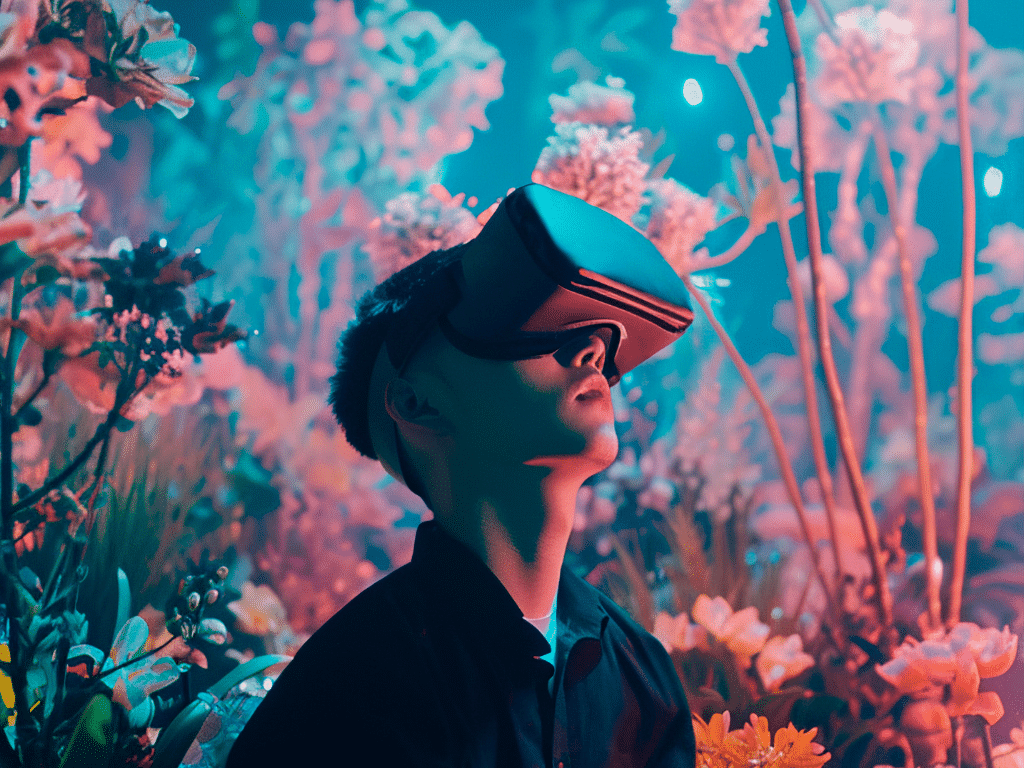Il mondo dei musei sta vivendo una vera e propria rivoluzione grazie alla tecnologia. Realtà aumentata (AR), audioguide personalizzate e tour virtuali stanno trasformando le visite tradizionali in esperienze digitali, immersive e su misura, rendendo i musei del futuro più accessibili e coinvolgenti. Non solo i visitatori ne escono entusiasti, ma i musei stessi beneficiano di strumenti che amplificano il loro impatto culturale e il coinvolgimento del pubblico.
Realtà Aumentata: L’Esperienza Museale del Futuro
Immagina di entrare in un museo e vedere opere d’arte che prendono vita, oggetti storici che si ricompongono davanti ai tuoi occhi o paesaggi antichi che ti trasportano indietro nel tempo. Non si tratta di qualcosa che riguarda solo i musei del futuro: è il presente. La realtà aumentata (AR) rende tutto questo possibile, offrendo un viaggio multisensoriale unico.
Perché l’AR sta conquistando i visitatori?
- Coinvolgimento totale: la tecnologia AR integra immagini, suoni e animazioni, stimolando i sensi e catturando l’attenzione come mai prima d’ora.
- Memorabilità: studi rivelano che le esperienze AR sono ricordate il 70% di più rispetto ai contenuti tradizionali.
- Effetto wow e passaparola: chi vive un’esperienza AR non vede l’ora di raccontarla ad altri, trasformandosi in un ambasciatore del museo.
La realtà aumentata si adatta inoltre alla tendenza del "Bring Your Own Device" (BYOD), che consente ai visitatori di usare i propri smartphone o tablet per accedere a contenuti personalizzati, riducendo la necessità di dispositivi aggiuntivi.
Audioguide personalizzate: inclusione e innovazione
Le audioguide stanno vivendo un’evoluzione che le rende non solo più utili, ma anche più inclusive e accessibili. Dimentica i vecchi dispositivi ingombranti: oggi tutto è a portata di smartphone con soluzioni come amuseapp, con un focus su accessibilità e personalizzazione.
Novità che fanno la differenza:
- Accessibilità per tutti: con audioguide come amuseapp, possiamo adattare il tono di ogni audioguida ad un target diverso di visitatori; possiamo ad esempio creare un’audioguida pensata proprio per descrivere l’arte visiva e i colori a persone non vedenti, tra le varie opportunità.
- Personalizzazione: hai a disposizione tempo limitato per la visita al musei? Scegli l’itinerario veloce. Hai figli di 6 anni? Scegli l’itinerario creato per i bambini? Sei un appassionato di storia dell’arte e vorresti una visita approfondita da dettagli tecnici? Ok!
- Tutto a portata di mano: non serve prenotare una visita guidata, non serve comprare un audioguida con le cuffie del museo, puoi ascoltare l’audioguida di amuseapp direttamente dal tuo telefono tramite l’app o la webapp e usare i tuoi auricolari o semplicemente avvicinare il telefono al tuo orecchio.
- Senza investimenti iniziali: amuseapp è disponibile per i musei nel modello pay-per-ticket. Scopri di più qui.
Queste audioguide non solo migliorano l’esperienza dei visitatori, ma eliminano la necessità di dispositivi dedicati, riducendo i costi e aumentando l’efficienza operativa dei musei.
Tour virtuali: l’arte a portata di clic
Per chi non può visitare fisicamente un museo, i tour virtuali rappresentano una soluzione straordinaria. Dai grandi classici come il Louvre e il British Museum, fino al Metropolitan Museum of Art, è possibile esplorare gallerie e opere d’arte direttamente da casa.
I vantaggi del virtuale:
- Accesso globale: chiunque, ovunque, può scoprire capolavori artistici con un semplice clic.
- Esperienze immersive: zoom su dettagli artistici, narrazioni interattive e tour guidati rendono il digitale sorprendentemente coinvolgente.
Sebbene alcuni studi suggeriscano che i tour virtuali non sostituiscono ancora completamente l’esperienza fisica, i progressi tecnologici e le nuove possibilità offerte dalla VR stanno rapidamente colmando il divario.
I musei del futuro
Realtà aumentata, audioguide personalizzate e tour virtuali non sono solo strumenti tecnologici, ma veri e propri alleati per i musei che vogliono restare al passo con i tempi. Non solo migliorano l’esperienza dei visitatori, ma aprono nuove strade nel campo dello sviluppo di contenuti interattivi e del design delle esperienze utente.
I musei che sapranno integrare queste tecnologie saranno in grado di attrarre un pubblico sempre più ampio e diversificato, trasformandosi in hub culturali all’avanguardia.


